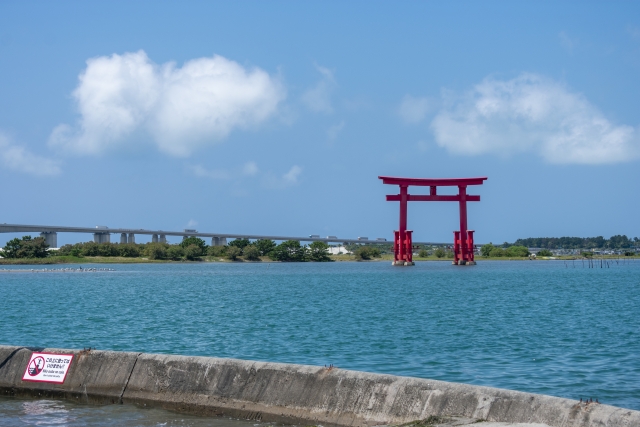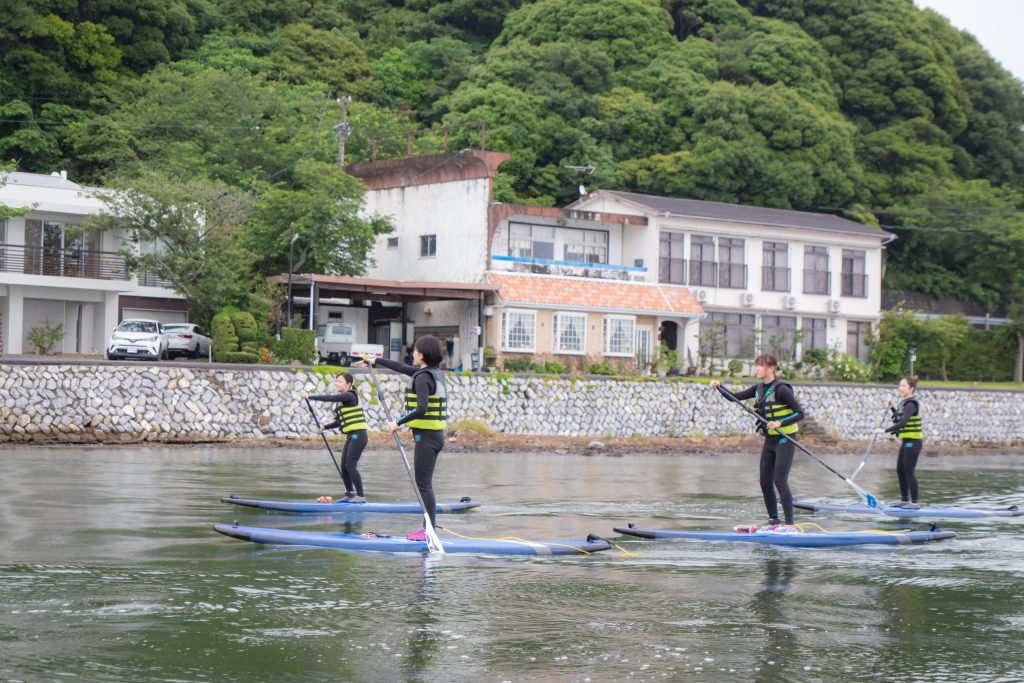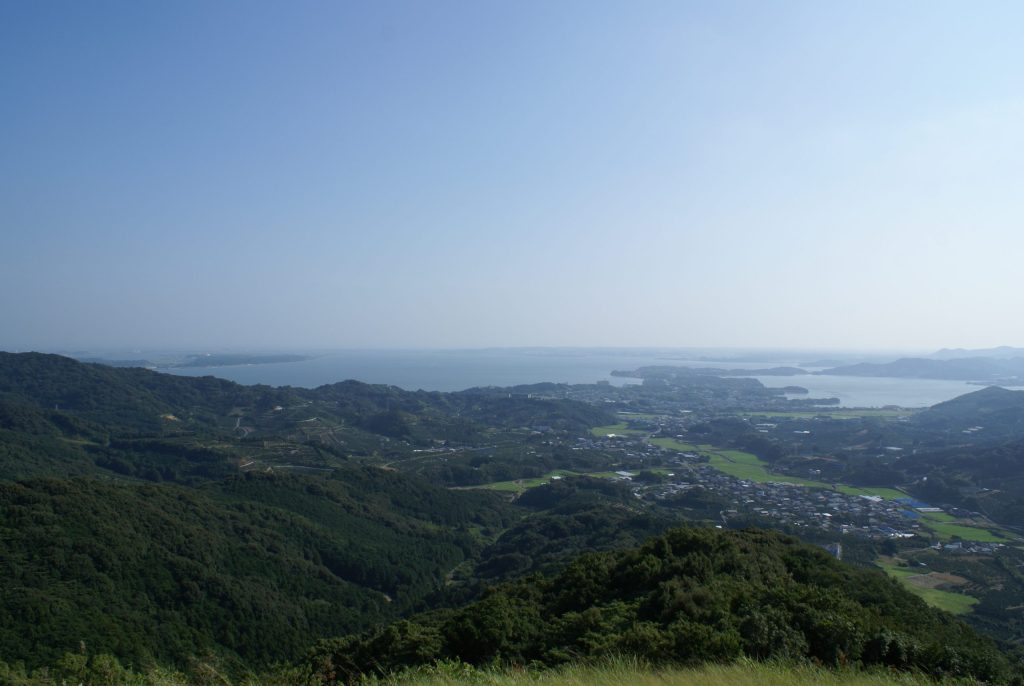
Shizuoka Prefecture lies at the heart of Japan, positioned exactly halfway between Tokyo and Osaka. Known for Mount Fuji, this region is a true “microcosm of Japan’s nature,” where lush mountains and warm coastal areas coexist. Hamamatsu City and Lake Hamana, stretching across its western part, represent an area within Shizuoka where the harmony of nature and culture is particularly beautiful. Here, you can immerse yourself in Japan’s original landscapes while savoring experiences that calm the soul—sunset views, the lake, and hot springs.
What is Lake Hamana?──Where Sea and Lake Meet: A Unique Natural Landscape
Lake Hamana, located in western Shizuoka Prefecture, is one of Japan’s largest brackish lakes. Where seawater and freshwater mix, it supports a diverse ecosystem unseen in other lakes. Fishing has thrived here since the time of Tokugawa Ieyasu, and through its specialties like eel, seaweed, and oysters, Lake Hamana has long been known as “the lake supporting Japan’s food culture.” The lake covers an area of approximately 65 square kilometers. The vast water surface, green mountains, and gentle sea breeze create a landscape that offers visitors deep tranquility.
Particularly popular is the “Red Torii Gate at Bentenjima Seaside Park” located in the southern part of the lake.
The Red Torii Gate of Benten Island──Japan’s Beauty and Mystery Bathed in Sunset Glow

Photo courtesy of Hamamatsu-Hamanako Tourism Bureau
The iconic “Red Torii Gate of Benten Island” stands at the boundary between sea and lake, appearing to float mysteriously on the water’s surface. In Japan, torii gates are considered “gates connecting the divine and human worlds,” and here, nature itself creates a sacred space.
The recommended viewing time is dusk (around 5:00 PM to 6:30 PM). As the sun sinks beyond the lake, the water transforms from gold to vermilion, making the torii’s red color stand out even more vividly.
This scene is truly a “symbol of Japanese tranquility and harmony.” Many foreign travelers post it on social media as a “sunset worth seeing once in a lifetime.” For photography, at high tide, water fills beneath the torii, creating a mirror-like reflection. At low tide, you can walk closer, allowing you to capture different photos at either time.
Experience the Charm of Lake Hamana Through Activities

Photo courtesy of Hamamatsu-Hamanako Tourism Bureau
Lake Hamanako offers not only breathtaking views to behold, but also breathtaking experiences to enjoy.
Water activities like canoeing, SUP, and cruises on its calm waters are popular. Guided experiences are available even for beginners, and tours with English explanations are increasing. The sunset cruise departing in the evening is especially recommended. Watching the sunset reflected on the lake surface from the boat, with the red torii gate behind you, is truly an experience where you savor the beauty of Japan with all five senses.
On land, Hamanako Garden Park is also popular. From its vast gardens and observation tower, you can see the silhouette of Mount Fuji on clear days. The park offers rental bicycles, making it a great way to leisurely explore the lakeside while enjoying the seasonal flowers.
Hamana Lake Hot Springs──A Moment to Experience the “Culture of Healing”
After sightseeing and activities, relax in hot springs overlooking the lake.
Kanzanji Onsen, located on the northern shore of Hamana Lake, is a hot spring resort with a history spanning 1,300 years. Originally a place where monks from the Zen temple Kanzanji purified their minds and bodies, it remains beloved by travelers today as a “hot spring for calming the mind.” The sodium-calcium chloride spring water warms the body to the core and leaves skin smooth and supple. Recommended accommodations include Hotel Kokonoe and Kanzanji Sago Royal Hotel. Both offer English menus and multilingual websites, ensuring a comfortable stay for international guests.
The sunset view of Lake Hamana from the bath is truly a moment of becoming one with nature.
It is a special place where you can experience Japan’s hospitality and culture of healing.
Shizuoka—Land of Mount Fuji, Tea, and Tranquil Hearts
Shizuoka Prefecture, home to Lake Hamana, is also one of Japan’s premier tea-producing regions.
Deep fog envelops the mountainous areas, allowing tea leaves to grow slowly and develop a rich aroma and mellow flavor. The scenery of tea fields encountered along the journey is also one of Shizuoka’s quintessential views.
Furthermore, Shizuoka enjoys a warm climate, characterized by pleasant weather throughout the year.
Just about an hour and a half by Shinkansen from the Tokyo metropolitan area and about an hour from Nagoya, its excellent access makes it a popular destination for experiencing a “local Japan” not found in Tokyo or Kyoto.
Visiting Lake Hamana allows you to experience Japan’s different expressions across the seasons: the scent of flowers and wind in spring, summer activities, breathtaking sunsets in autumn, and the tranquility of hot springs in winter.
Lake Hamana is a place where you can feel the tranquility of Japan.

Photo courtesy of Hamamatsu-Hamanako Tourism Bureau
The breathtaking views of Lake Hamana are not merely beautiful; they evoke the Japanese spirit of harmony with nature that has been cherished for generations. The sunset reflected in the red torii gate, the breeze drifting across the lake, and the steam rising from the hot springs—all create a serene moment that lets you forget the hustle and bustle of modern life. Why not venture a little further from Tokyo or Kyoto to experience “Shizuoka’s Japan”? You are sure to encounter the “authentic beauty of Japan” that will remain in your travel memories.

